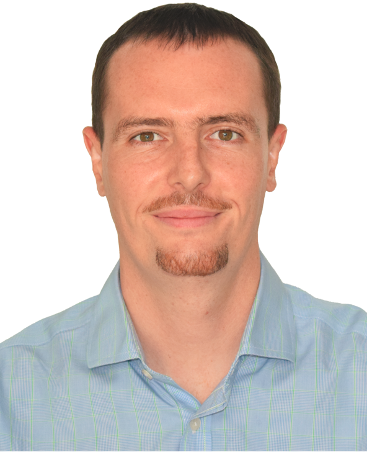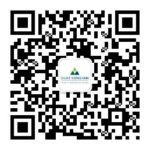By Lingli Tang
Lingli Tang ’22 talked with Joseph Davies, English Language Lecturer, about the importance of graduate students strengthening their academic communication skills through a comprehensive course.
At the end of each fall term, DKU graduate programs hold an annual colloquium where students give academic presentations about their research and projects. To prepare the DKU graduate students with professional academic presentation and oral discussion skills, “Academic Communication Skills” is a required course in the graduate curriculum. Joseph Davies, one of the instructors of this course, prepares his students with five assessed mini-presentation tasks that seek to gradually equip them with improved presentation abilities throughout the whole semester. Each academic presentation focuses on one major skill as follows: how to professionally introduce a speaker, explain data visuals and academic processes, clearly define and explain field-specific concepts and develop pronunciation accuracy and prosody. To achieve these goals, Prof. Davies designs and implements a comprehensive learning process: after each presentation, video recordings of the performances are shared with students who are then required to use the presentation assessment rubric to complete both self-assessment and peer-assessment. This provides students with detailed quantitative and qualitative feedback, allowing them to reflect deeply on their performance, current strengths, and areas for improvement in the next presentation.
According to McMillan and Hearn (2008), student self-assessment is a cycle in which students first identify their current learning and performance levels, then they give feedback to themselves with respect to specific standards and criteria, finally leaners determine the next steps or plans to enhance their performance.1 In Prof. Davies’ classes, he video-records students’ presentations using professional equipment — after having asked for permission. Then, he shares the recorded videos with all students along with a very specific, 3-page self-assessment document. Based on the recorded videos, students need to evaluate their performance and track their progress using the same rubrics Prof. Davies uses to grade students which include criteria such as organization, language, delivery, and content. Learners are also required to score their performance and provide written comments to justify their results. Prof. Davies addresses the importance of letting students comment on their performance and explains why he asks students to evaluate themselves in this specific way. “I do not want to correct my students’ work,” Prof. Davies shares his teaching philosophy. “It is a very important part of the learning process: students themselves have the time and go through the thought process of correcting their own work.” One student in Davies’ class talked about doing self-assessment based on recorded videos, “It makes me realize some of the weaknesses of myself more intuitively and it’s easy to compare my own expressions with other students.” In addition, Prof. Davies also asks his students to transcribe two minutes of their presentation, exactly word by word (including fillers, false starts and spoken errors). During this process, Davies argues, learners are more likely to recall and notice their grammatical and vocabulary errors in wording and sentence structure when watching their performance, which is helpful for them to improve next time.
After students have reflected upon their learning through self-assessment, they are required to view another two classmates’ presentations and complete the peer feedback using rubrics and criteria similar to the self-assessment and instructor’s feedback form. The philosophy behind using the same rubric criteria for self and peer feedback is that continued exposure and use of the criteria should raise students’ awareness of the features of strong academic presentations. Peer feedback is considered beneficial for students’ learning according to Boud, Falchikov and others in a series of studies (Boud, 1995; Brew, 1999; Falchikov, 2001).2,3,4 For example, students’ participation in the peer feedback process can allow them to learn from peers’ performances and improve their communication skills (Ion, Barrera-Corominas & Tomàs-Folch, 2016).5 After completing peer feedback, Prof. Davies will give students in-class time, and the usual classroom changes to “feedback exposition.” He places all students’ peer feedback on various tables throughout the classroom and asks his students to walk around and read others’ peer feedback carefully. Students share their comments and perspectives with each other. Additionally, it is also a useful time to ask peer evaluators questions or to clarify any points if required. Prof. Davies mentions that in order to allow his students to make good use of this in-class time, it is crucial to build a sense of community and explain to students why doing this peer feedback in-class activity is beneficial to their learning.
Overall, after each presentation, DKU graduate students will go through the process of self-assessment and peer feedback (as well as receiving detailed feedback from Prof. Davies). “Continuous assessment facilitates student learning, enables students to become active, responsible and reflective practitioners, improves the quality of learning and provides formal accountability and accreditation of knowledge,” (Ion, Barrera-Corominas, & Tomàs-Folch, 2016, p. 1).6 By the end of the fifth presentation, students have accumulated a series of self-assessment and peer feedback documents which they can use to reflect upon their progress and identify areas of improvement. Self-assessment and peer feedback may also contribute towards students becoming better independent language learners. Prof. Davies hopes to prepare his students with these helpful skills for them to apply in other courses and learning processes in future academic or professional careers.
References
- McMillan, H. J., Hearn, J. (2008). Student Self-Assessment: The Key to Stronger Student Motivation and Higher Achievement. Educational Horizons, 87, 40-49.
- Boud, D. (1995). Enhancing learning through self-assessment. London: Kogan Page.
- Brew, (1999). Towards autonomous assessment: using self -assessment and peer assessment. In Brown S, Glasner A (eds). Assessment matters in higher education: choosing and using diverse approaches (pp.48–63). Buckingham:Society for Research into Higher education and Open University Press.
- Falchikov, N. (2001). Learning together. Peer tutoring in higher education. London: Routledge Falmer.
- Ion, G., Barrera-Corominas, A. & Tomàs-Folch, M. (2016). Written peer-feedback to enhance students’ current and future learning. International Journal of Educational Technology in Higher Education, 13(1), doi: 10.1186/s41239-016-0017-y.
- Ion, G., Barrera-Corominas, A. & Tomàs-Folch, M. (2016). Written peer-feedback to enhance students’ current and future learning.
Faculty Introduction

Joseph Davies
Lecturer in English language, Duke Kunshan University
His current research focuses on student and teacher feedback literacy, classroom assessment, and EAP pedagogy. He has extensive experience managing, designing, and teaching academic and professional English-language courses throughout China.
Davies has a First Class B.Sc. (honors) in forensic science and an M.A. in Teaching English to Speakers of Other Languages with Applied Linguistics (distinction) from the University of Central Lancashire (UCLan). He also holds a Cambridge University DELTA qualification and is a Senior Fellow of the Higher Education Academy (SFHEA). He has lectured at NYU Shanghai and previously served as UCLan’s business development lead.


